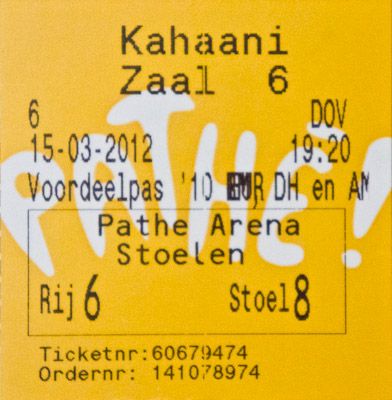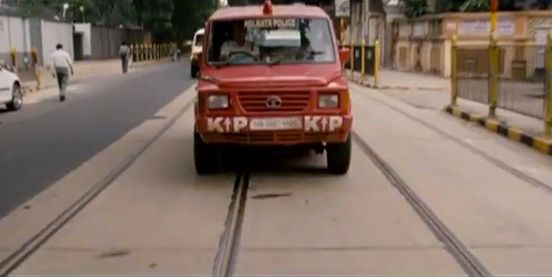Kahaani
My Dutch vocabulary is extremely limited. When you are living in a country where the printed words - from outdoor advertising to food labels to TV subtitles — are in Dutch, acquiring new words is never a challenge. The real challenge is retaining them. So I play this little game on my walk to the station — whenever a word pops up in my head in English or Hindi, I search my limited vocabulary for its Dutch equivalent.
I hadn’t watched a Hindi movie in a long time and never one in a theatre here. Partly because very few Hindi movies make it to theatres in Amsterdam and partly because I was worried they’d make me terribly homesick. When the wife proposed that we watch Kahaani, the first thing that occurred to me was that it’d be interesting watching a Hindi movie with Dutch subtitles. But I think the real reason I chose to watch it because the Dutch word for Kahaani (verhaal) popped in my head.
Bollywood might have a lot of drawing power elsewhere, but here in Amsterdam Hindi movies barely last a week. And if they do, the crowd thins down to such a trickle that running costs of the show must be more than what the theatre would earn. I wasn’t surprised when we turned up in the large hall (no. 6) at the Bijlmer Pathé only to find a mere 15 people.
 Kahaani - Hindi movie, Dutch ticket stub
Kahaani - Hindi movie, Dutch ticket stub
Once the endless production house names and the many notes of thanks rolled by, the movie began and from the very first frame I was drawn in. The India on the screen seemed to envelope the world outside. Even with the Dutch subtitles, there was a feeling of sitting in a theatre in India. I felt that when I’d step out after the movie, I’d be standing in Garuda mall in Bangalore. It was homesickness at its visceral worst.
Language is a funny thing. Once you know a language deeply, you understand it without consciously understanding it. You hear sounds and they convey pictures, stories, ideas and emotions. I’ve spent practically the same number of years speaking (reading, writing) English and Hindi. Once an idea has been conveyed in either of these languages, only the idea stays and I tend to forget which language it was conveyed in. So while I watched a Hindi movie, and it managed to elicit a deep, emotional response, I have no memory of the movie having been in Hindi. I remember the story, I remember most of the scenes, but can I say with certainty that the actors spoke Hindi? No. This I find a little baffling.
P.S. Both Dutch and Bengali distort ‘V’. Our protagonist’s name - Vidya became Bidya in Bengali. Had she come to Amsterdam, it’d be Fidya.
P.P.S. The Dutch subtitling of movies is very thorough. They caught the barely comprehensible Kolkata metro announcements in the background in the first scene. And in the scene where Vidya describes her missing husband’s height as being around 5’7”-5’8”, the subtitles used the converted metric unit of 1.7 meters. The wife points out that in addition to English, there was dialog in at least 3 Indian languages in this movie (Hindi, Bengali and Tamil). The Dutch subtitling will never capture that.
P.P.P.S. The Kolkata police jeeps had KP written on them. In at least one shot, it looked like KIP. It brought both wife and me some chuckles because kip in Dutch means chicken. Yup, we are beginning to get a little mixed up.
 KIP
KIP